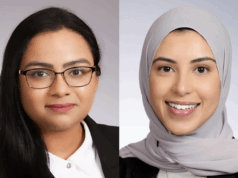
According to the American Academy of Neurology (AAN) more than one million athletes experience a concussion every year in the USA. The AAN released an evidence-based guideline for evaluating and managing athletes with concussion. This new guideline replaces the 1997 AAN guideline on the same topic. The new guideline is published in the 18 March 2013 in Neurology and was developed through an objective evidence-based review of the literature by a multidisciplinary committee of experts and has been endorsed by a broad range of athletic, medical and patient groups, according to a release.
“Among the most important recommendations the Academy is making is that any athlete suspected of experiencing a concussion immediately be removed from play,” said co-lead guideline author Christopher C Giza, David Geffen School of Medicine and Mattel Children’s Hospital, University of California Los Angeles, USA, and a member of the AAN. “We have moved away from the concussion grading systems we first established in 1997 and are now recommending concussion and return to play should be assessed for each athlete individually. There is no set timeline for safe return to play.”
The updated guideline recommended that athletes with suspected concussion be immediately taken out of the game and not returned until assessed by a licensed health care professional trained in concussion, and return to play slowly and only after all acute symptoms are gone. Athletes of high school age and younger with a concussion should be managed more conservatively in regard to return to play, as evidence showed that they take longer to recover than college athletes.
According to the AAN the guideline was developed by reviewing all available evidence published through June 2012. These practice recommendations are based on an evaluation of the best available research. In recognition that scientific study and clinical care for sports concussions involves multiple specialties, a broad range of expertise was incorporated in the author panel. To develop this document, the authors spent thousands of work hours locating and analysing scientific studies. The authors excluded studies that did not provide enough evidence to make recommendations, such as reports on individual patients or expert opinion. At least two authors independently analysed and graded each study.
According to the guidelines:
- Among the sports in the studies evaluated, risk of concussion is greatest in football and rugby, followed by hockey and soccer. The risk of concussion for young women and girls is greatest in soccer and basketball.
- An athlete who has a history of one or more concussions is at greater risk for being diagnosed with another concussion.
- The first 10 days after a concussion appears to be the period of greatest risk for being diagnosed with another concussion.
- There is no clear evidence that one type of football helmet can better protect against concussion over another kind of helmet. Helmets should fit properly and be well maintained.
- Licensed health professionals trained in treating concussion should look for ongoing symptoms (especially headache and fogginess), history of concussions and younger age in the athlete. Each of these factors has been linked to a longer recovery after a concussion.
- Risk factors linked to chronic neurobehavioral impairment in professional athletes include prior concussion, longer exposure to the sport and having the ApoE4 gene.
- Concussion is a clinical diagnosis. Symptom checklists, the Standardised Assessment of Concussion (SAC), neuropsychological testing (paper-and-pencil and computerised) and the Balance Error Scoring System may be helpful tools in diagnosing and managing concussions but should not be used alone for making a diagnosis.
Signs and symptoms of a concussion include:
- Headache and sensitivity to light and sound.
- Changes to reaction time, balance and coordination.
- Changes in memory, judgment, speech and sleep (loss of consciousness or a “blackout” happens in less than 10% of cases).
“If in doubt, sit it out,” said Jeffrey S Kutcher, University of Michigan Medical School, USA, and a member of the AAN. “Being seen by a trained professional is extremely important after a concussion. If headaches or other symptoms return with the start of exercise, stop the activity and consult a doctor. You only get one brain; treat it well.”
The guidelines stated that while an athlete should immediately be removed from play following a concussion, there is currently insufficient evidence to support absolute rest after concussion. Activities that do not worsen symptoms and do not pose a risk of repeat concussion may be part of concussion management.
The guidelines are endorsed by the National Football League Players Association, the American Football Coaches Association, the Child Neurology Society, the National Association of Emergency Medical Service Physicians, the National Academy of Neuropsychology, the National Association of School Psychologists, the National Athletic Trainers Association and the Neurocritical Care Society.












